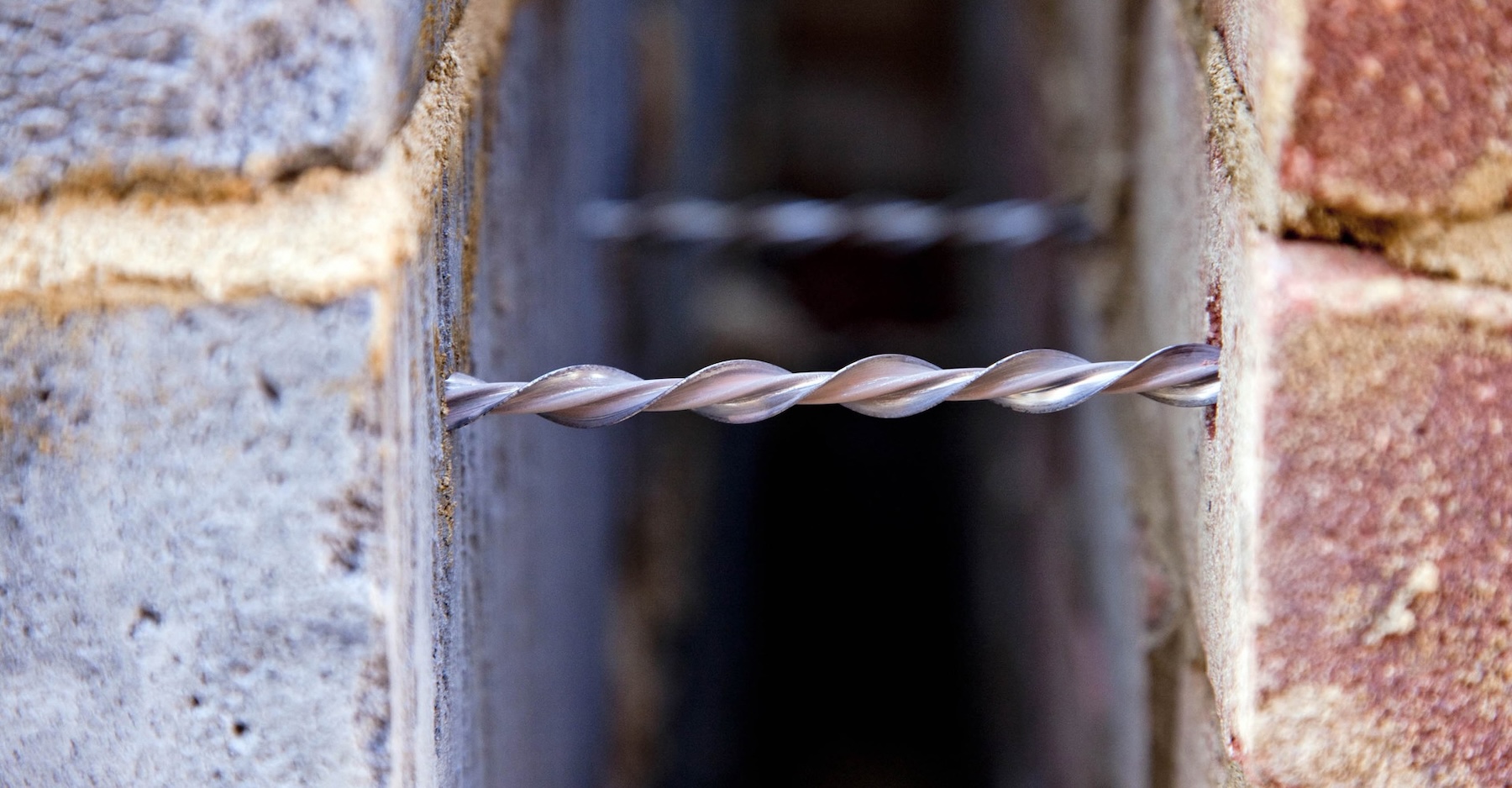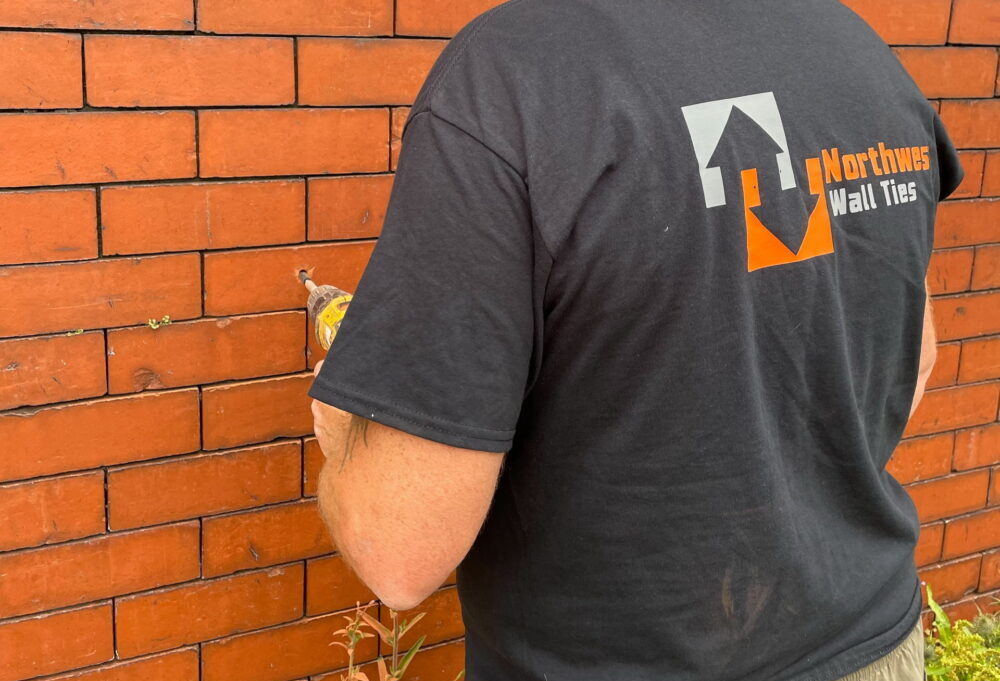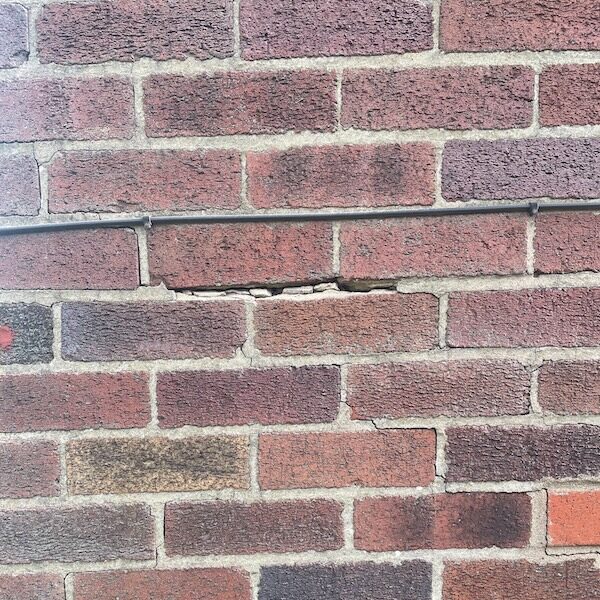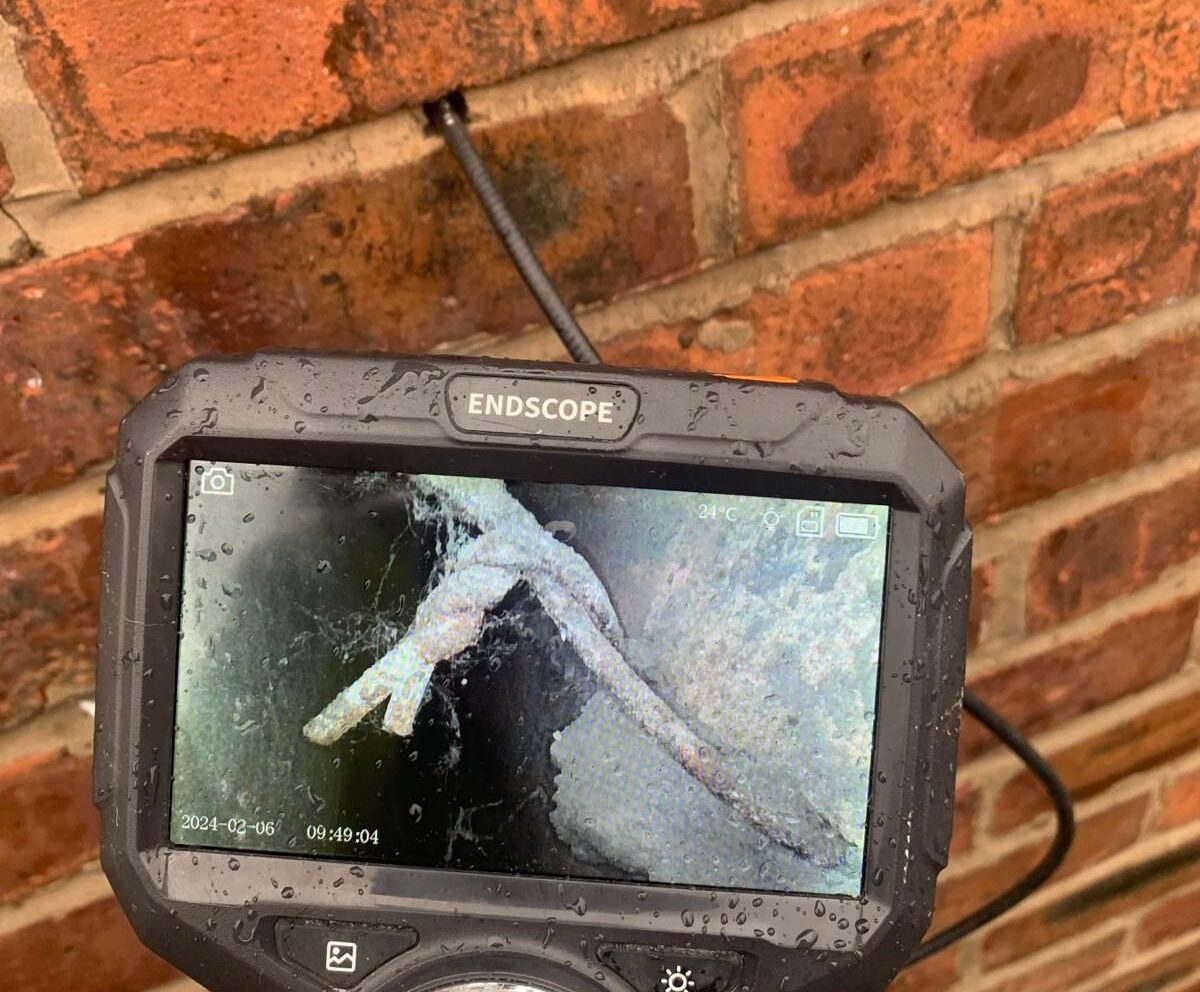Cavity wall tie survey
Cavity wall tie survey
What are cavity wall ties?
Cavity wall ties, such as fishtail ties made of iron or steel, play a crucial role in construction by connecting the inner and outer walls of a cavity wall. Beginning in the early 1920s, the innovation of the Butterfly tie, crafted from twisted wire, emerged as an alternative.
Positioned horizontally within the wall cavity and secured with mortar, these ties fortify the structure by preventing moisture from traversing from the exterior to the interior wall. Their strategic design is integral to ensuring the safety and stability of the wall. In the absence of proper wall ties, or if they become corroded over time, substantial sections of brickwork—such as gables—can succumb to the forces of wind suction, leading to potential collapse.


What causes cavity wall ties to corrode?
Cavity wall ties, initially made from iron or steel, are prone to corrosion in damp conditions. To prevent this, they were galvanized with zinc. However, this protective layer can degrade over time, leading to failure. The first British standard wall tie with a defined zinc coating was introduced in 1945 and improved in 1981.
Pre-1981 wall ties often fail prematurely due to various factors such as corrosive mortars, exposure to rain, and substandard galvanising. Fishtail wall ties expand upon corrosion, causing cracks in the outer leaf, while Wire Butterfly ties may snap without expansion, resulting in wall bulges. Replacement of older wall ties with modern stainless steel ones is recommended to prevent future failures.
Signs of cavity wall tie failure

Horizontal Cracks
Found in the mortar, often at a high level. This is caused by the expansion of corroded wall ties on the external leaf.
Bulging Brickword
A sign of snapped wall ties, which can make your property unstable.
Internal Cracking
Internal cracking is caused by the expansion of corroded wall ties.
Cracks in the render
Vertical cracks in the render
Roof edges lifting
The inner leaf carries the roof load, but as corroded wall ties expand and crack the mortar, the outer leaf takes the load resulting in forcing the roof upwards or the gable ridge to rise
Signs of cavity wall tie failure
Horizontal Cracks
Found in the mortar, often at a high level. This is caused by the expansion of corroded wall ties on the external leaf.
Bulging Brickword
A sign of snapped wall ties, which can make your property unstable.
Internal Cracking
Internal cracking is caused by the expansion of corroded wall ties.
Cracks in the render
Vertical cracks in the render
Roof edges lifting
The inner leaf carries the roof load, but as corroded wall ties expand and crack the mortar, the outer leaf takes the load resulting in forcing the roof upwards or the gable ridge to rise
Cavity wall tie survey
If you suspect that your property may be experiencing issues related to cavity wall tie failure or requires replacement, it’s crucial to seek guidance from a specialised surveyor. To accurately diagnose the problem, we highly recommend undergoing a thorough cavity wall tie survey.
Our expert surveyors conduct comprehensive surveys in line with industry standards to assess the condition of your property and determine if cavity wall tie replacement is necessary.
Utilising advanced diagnostic tools like endoscopes and metal detection equipment, our experienced surveyors meticulously inspect wall ties, identify any cracks or defects in the brickwork, and provide tailored advice along with a detailed quote for cavity wall tie replacement.

Why choose Northwest Wall Ties
Family Values: As a family-run business, we understand the importance of trust and reliability. You can count on us to treat your property with the same care and attention to detail as we would our own.
Wall Tie Installers Federation Members: Northwest Wall Ties are members of the Wall Tie Installers Federation, registered installers subscribe to a code of practice based on BRE Digests 329 and 401 and the Federation’s own rules. This membership together with adherence to BRE standards provides reassurance to our customers on the quality of our work.
Expertise: With years of experience in cavity wall tie inspection and repair, we have the knowledge and skills to deliver superior results, no matter the complexity of the project.
Quality Assurance: We stand behind the quality of our workmanship and materials, ensuring that your property receives the best possible care and attention.
Customer Satisfaction: Your satisfaction is our top priority. We go above and beyond to exceed your expectations and ensure a smooth and hassle-free experience from start to finish.
When it comes to protecting your property, trust the experts at Northwest Wall Ties to deliver reliable solutions you can depend on. Contact us today to learn more about our services and how we can help safeguard your investment for years to come.
Cavity wall tie survey FAQs
Testimonials
Warren and his team were friendly and efficient, working well together to get the job done properly and quickly. He quoted for the work back in September, and the price stayed the same despite us not confirming the go-ahead until December. All in all professional and I would recommend them to anyone needing wall ties in future.
After wall tie failure was highlighted on our building survey, North West Wall Ties produced a professional pre-purchase report for us in really good time, and gave us what seems a perfectly reasonable quote for the work. Hopefully our purchase goes through and then we’ll be able to get the required work done with this company.
Warren was fantastic. From the first point of contact to the job was complete he was contactable, reliable, extremely fair in price and more than punctual.
Very professional manner and very thorough in his work. Extremely approachable, happy and pleasant. Very highly recommended.
